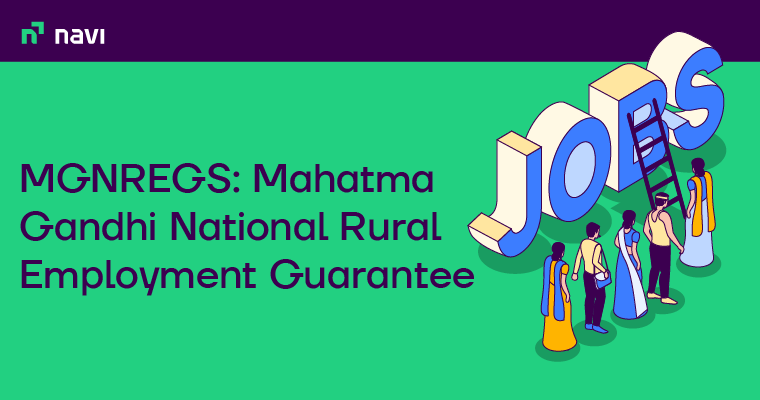A Detailed Guide to Mahatma Jyotiba Phule Jan Arogya Yojana (MJPJAY)

The Mahatma Jyotiba Phule Jan Arogya Yojana (MJPJAY) is a Maharashtra State Government-backed plan created to provide health insurance benefits to the economically weaker section. Previously known as the Rajiv Gandhi Jeevandayee Arogya Yojana, it provides access to free medical care and facilities to financially disadvantaged people in Maharashtra. This article discusses the features, benefits, how to apply for Mahatma Jyotiba Phule Jan Arogya Yojana and file a claim. Read on!
What is Mahatma Jyotiba Phule Jan Arogya Yojana (MJPJAY)?
The Maharashtra state government established the Mahatma Jyotiba Phule Jan Arogya Yojana (MJPJAY) to provide low-income communities with free and high-quality medical care. The service includes free medical treatment through an established network of medical professionals, primarily for specialty services that require hospital stays for counselling sessions, operations, and therapies. With a total insured amount of Rs.1,50,000 per family yearly, the MJPJAY would cover all medical expenses paid by the beneficiary while he or she is hospitalised. A person or a household can obtain Rs.1,50,000 per year of insurance through cashless inpatient treatment.
Objectives of Mahatma Jyotiba Phule Jan Arogya Yojana
The primary objective of the Mahatma Jyotiba Phule Jan Arogya Yojana is that the state government has decided to treat the poor people of Maharashtra who are financially distressed, with 14 districts included in this kind of ration card. Under Mahatma Jyotiba Phule Jan Arogya Yojana, highly-priced medical services such as surgery and organ transplants therapy are provided for such poor people in addition to those farmers who are survivors of any natural catastrophe and whose financial assistance is very limited. All of these diseases have been assigned to government hospitals in the state of Maharashtra.
Also Read: Yeshasvini Health Insurance Scheme: Features, Coverage, Eligibility And How To Claim
Features of Mahatma Jyotiba Phule Jan Arogya Yojana
The scheme provides several advantages in the form of 971 procedures. 131 of these procedures are only performed in government hospitals. However, diseases that can be treated in ordinary hospitals or primary-level health centres will not be covered under this plan. The Mahatma Jyotiba Phule Jan Arogya Yojana has many features.
- Members of this plan will be able to use the economic advantages on a floater basis. This means that an individual or entire family can obtain insurance for Rs.1.5 lakh.
- Hospitals in the Scheme’s network will be required to provide cashless services. Furthermore, the insured is not required to pay any deposits.
- There will be no exemptions or waiting periods for pre-existing diseases in this Plan.
- Independent private hospitals listed in the Scheme’s network will also provide professional services.
- Network hospitals must also provide free follow-up consultation sessions.
- People with the appropriate health card will be eligible for free kidney transplants.
- Every month, at least one free medical camp will be held at each hospital in the Scheme’s network.
Eligibility Criteria for Mahatma Jyotiba Phule Jan Arogya Yojana
- An underprivileged family’s annual income should be less than one lakh Indian rupees.
- Underprivileged families in Maharashtra’s 36 districts with this yellow or orange ration card and children under the age of 2 will be eligible.
- Farmers suffering from natural disasters will be eligible, and these 14 Maharashtra districts are included.
- The claimant’s family must be Maharashtra residents.
Documents Required
The following documents must be submitted for Mahatma Jyotiba Phule Ja Arogya Yojana:
- Government-issued photo ID proof
- Passport
- Handicap Certificate
- Driving Licence
- Pan Card/Voter’s ID
- Government-issued senior citizen card
- Photograph with Tehsildar’s signature
- Freedom fighter card
How to Enroll under the MJPJAY?
The enrolling procedure in the Maharashtra MJPJAY scheme is as follows:
Step 1: Individuals or families should visit a nearby Network/District/Women/General hospital and meet with Arogyamitra to begin the scheme application process.
Step 2: If you visit a Government Health Facility, you will be given a referral card that you can present to the Network Hospital along with the clinical assessment made by the physician at the Government Health Facility.
Step 3: The referral card can also be obtained by attending one of the Network Hospital’s Community Clinics.
Step 4: Display the reference card and your Yellow or Orange Card. Users can show your Annapurna or Antyodaya Card instead of a ration card.
Step 5: The analytic and follow-up process will begin after providing the above details.
Step 6: You will be admitted to the Network Hospital based on the diagnosis.
Step 7: The insurance company will receive an E-authorisation request, which the MJPJAY will also review.
Step 8: The medical specialists at the insurance company and MJPJAY will review the authorisation request and approve it if all conditions are met. This authorisation will be finished within a day, and if the authorisation is marked “EM,” it will be finished quickly in the event of an emergency.
Step 9: After your authorisation is approved, you will be able to receive cashless treatment or hospital stays.
Step 10: To settle the claim, the hospital will provide the insurance company with all of the diagnostic reports, original bills, discharge summary, and other relevant evidence.
Step 11: After reviewing the paperwork, the insurance company will approve the claim and pay the hospital.
Step 12: Under the scheme, the network hospital will provide free consultations, tests, and medicines up to 10 days after release.
What is Covered Under Mahatma Jyotiba Phule Jan Arogya Yojana?
The Mahatma Jyotiba Phule Jan Arogya Yojana includes 971 therapies, procedures, and surgeries and 30 different categories having follow-up packages of around 121. Here are a few examples:
- The government has designated procedures around 132 for performance by accredited government medical institutes or hospitals.
- A kidney transplant with a limit of Rs.2,50,000.
- Consultations and prescription drugs for post-hospitalisation are covered for up to 10 days after discharge.
- General surgery
- ENT surgery
- Obstetrics surgery
- Cardiac and cardiothoracic surgery
- Ophthalmology surgery
- Pediatric surgery
- Plastic surgery
- Radiation surgery
- Gynaecology surgery
- Genitourinary system
- Neurosurgery
- Surgical Oncology
- Medical Oncology
- Radiation Oncology
- Burns
- Polytrauma
- Prosthesis
- Critical Care
- General Medicine
- Infectious Diseases
- Nephrology
- Pulmonology
- Dermatology
- Rheumatology
- Endocrinology
- Gastroenterology
- Interventional Radiology
What is Not Covered under the MJPJAY?
The Mahatma Jyotiba Phule Jan Arogya Yojana excludes the following from the plan:
- Pneumonia
- Diarrhoea
- Diabetes
- Snakebite
- Hernia and appendicitis (unless emergency).
How to Apply for MJPJAY Card?
Visit your nearby network hospital. and meet with the Arogyamitra or the representative. The representative will verify your documentation and enrolment and would help you get an MJPJAY card.
If you have contacted a Government-run hospital for the same, they will issue you with a referral card for a nearby network hospital. You can also avail a health card by visiting Health Camps conducted by network hospitals from time to time.
How to File a Claim for MJPJAY?
The procedure to file a claim for the Mahatma Jyotiba Phule Jan Arogya Yojana scheme is straightforward and is outlined below:
- First and foremost, the diagnosis of the condition is carried out by the network hospital
- After the diagnosis, the treatment is initiated by the hospital, post pre-authorization. In case the diagnosis is not made by a network hospital, there would be a referral made for the treatment to begin through a network hospital.
- The treatment would be conducted in cashless mode by the network hospital.
- After treatment completion, the hospital will send required documentation to the insurer. These will include medical bills, receipts, reports and discharge papers.
- After verifying the documents properly, the insurer will approve the claim.
Also Read: Universal Health Insurance Scheme: Coverage, Benefits, Eligibility And More
Final Word
The Maharashtra government intends to establish a call centre through which the Jyotiba Phule Jan Arogya Yojana will be used to provide even better healthcare facilities. The Mahatma Jyotiba Phule Jan Arogya Yojana is undergoing some variations. This could be increased to INR 2 lakh with the inclusion of possibly counting to 1034 different types of treatments or operations under the scheme.
FAQs on Mahatma Jyotiba Phule Jan Arogya Yojana (MJPJAY)
Ans: The turnaround time for the Mahatma Jyotiba Phule Jan Arogya Yojana pre-authorisation is 12 hours.
Ans: No, the beneficiary must bear the ambulance charges under this scheme.
Ans: The Mahatma Jyotiba Phule Jan Arogya Yojana toll-free helpline number is 1800-233-2200/155 388.
Ans: Yes, the Mahatma Jyotiba Phule Jan Arogya Yojana (MJPJAY) covers COVID-19, also known as the Novel coronavirus.
Ans: No, the Mahatma Jyotiba Phule Jan Arogya Yojana scheme only covers the cost of appendicular perforation treatment.
Before you go…
How about an affordable health insurance policy 👨⚕️ starting at a monthly premium of just ₹235? Install the Navi app now and get your policy in under 2 minutes.
Disclaimer: This article has been prepared on the basis of internal data, publicly available information and other sources believed to be reliable. The information contained in this article is for general purposes only and not a complete disclosure of every material fact. It should not be construed as investment advice to any party. The article does not warrant the completeness or accuracy of the information, and disclaims all liabilities, losses and damages arising out of the use of this information. Readers shall be fully liable/responsible for any decision taken on the basis of this article.
Health Insurance Knowledge Base

Customer’s Feedback
No comments found.What is the Full Form of MGNREGS – Eligibility and How to Apply?
MGNREGS Full Form The full form of MGNREGS is Mahatma Gandhi National Rural Employment Guarantee... Read More »TPA in Health Insurance – Meaning, Full Form, Functions and Roles
TPA (full form - Third Party Administrator) is a licensed intermediary between health insurance pol... Read More »5 Best Cancer Insurance Policy in India 2023 – Types and Benefits
Cancer insurance plans can give individuals and families financial protection from expensive cancer... Read More »10 Best Cashless Health Insurance Policy in India 2023 – Taxation and Cover
Cashless health insurance plans are policies that provide medical coverage to policyholders without... Read More »6 Best Critical Illness Insurance Companies in India 2023
Critical illness insurance is a type of health insurance policy that protects against fatal illness... Read More »10 Best Personal Accident Insurance Policy in India 2023
Accident insurance plans provide financial assistance to the policyholder in the event of an unfort... Read More »Best Health Insurance for Parents in India 2023 and How to Buy?
Health insurance for parents offer several perks, including a higher insured sum and full coverage ... Read More »Best Dental Insurance Plans in India 2023: Benefits, Types and How to Claim?
Dental insurance plans are policies that provide cover for expenses arising out of standard dental ... Read More »7 Best Health Insurance for Newborn in India 2023 – Benefits and Cover
Health insurance for newborns are crucial in today’s time. When you are a new parent, the safety ... Read More »Yeshasvini Health Insurance Scheme: Apply for Yeshasvini Health Card Online
Everyone should have access to quality, affordable healthcare. Yeshasvini Health Insurance Scheme i... Read More »5 Best Diabetes Health Insurance in India 2023 – Top Plans, Cover and Benefits Offered
Diabetes Health Insurance plans are specifically designed insurance covers for people who have diab... Read More »Best Family Floater Health Insurance Plans in India (2023)
A family floater health insurance plan covers the medical expenses of the entire family. It is more... Read More »Top 10 Chit Fund Schemes in India in 2023
Chit funds are one of the most popular return-generating saving schemes in India. It is a financial... Read More »10 Best Gold ETFs in India to Invest in April 2023
Gold ETFs or Gold Exchange Traded Funds are passively managed funds that track the price of physica... Read More »10 Best Demat Accounts in India for Beginners in 2023
Creation of Demat accounts revolutionised the way trades were conducted at the stock exchanges. It... Read More »20 Best Index Funds to Invest in India in April 2023
What is an Index Fund? An index fund is a type of mutual fund or exchange-traded fund (ETF) that... Read More »Best Arbitrage Mutual Funds to Invest in India in April 2023
Arbitrage funds are hybrid mutual fund schemes that aim to make low-risk profits by buying and sell... Read More »10 Best SIP Plans in India to Invest in April 2023
What is SIP? SIP or Systematic Investment Plan is a method of investing a fixed amount in ... Read More »10 Best Corporate Bond Funds in India to Invest in April 2023
Corporate bond funds are debt funds that invest at least 80% of the investment corpus in companies ... Read More »10 Best Bank for Savings Account in India [Highest Interest Rate 2023]
Savings account is a type of financial instrument offered by several banks. It lets you safely depo... Read More »






























